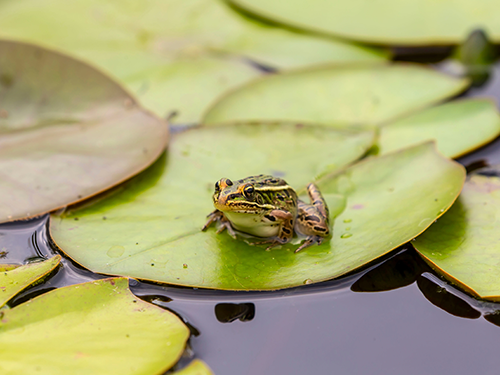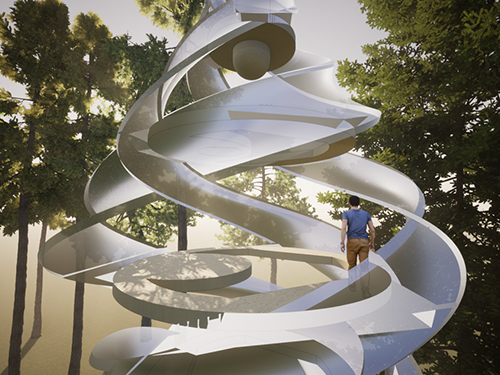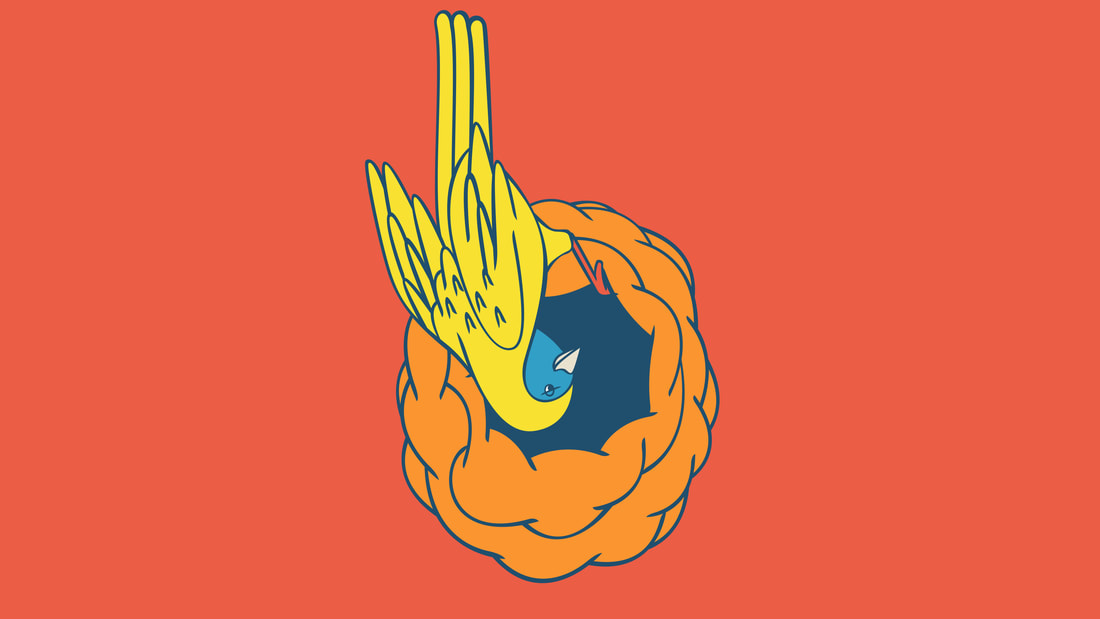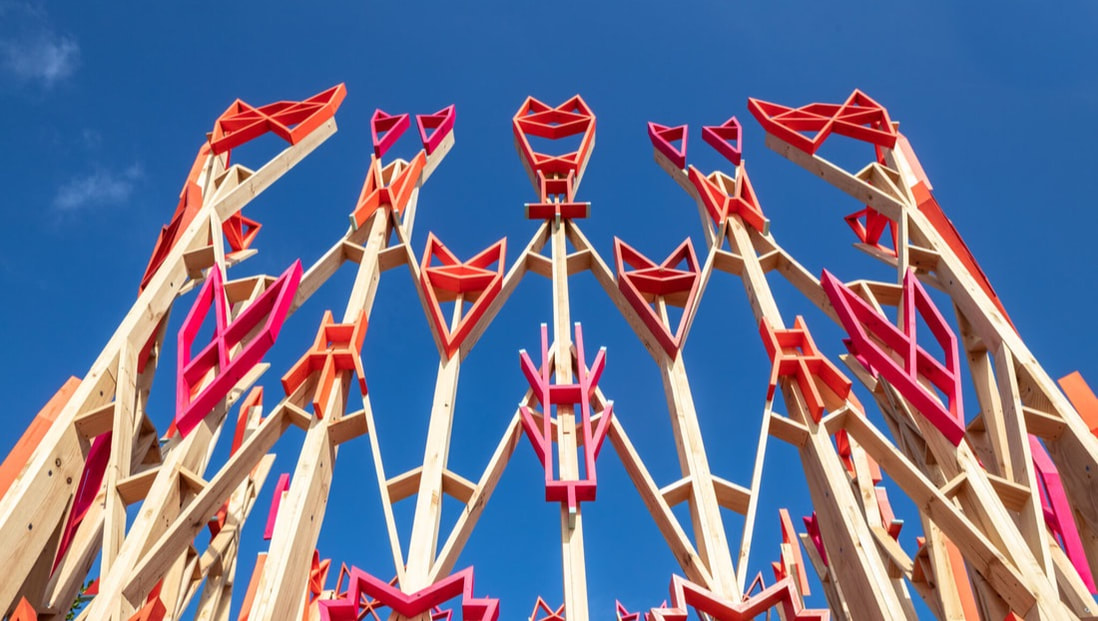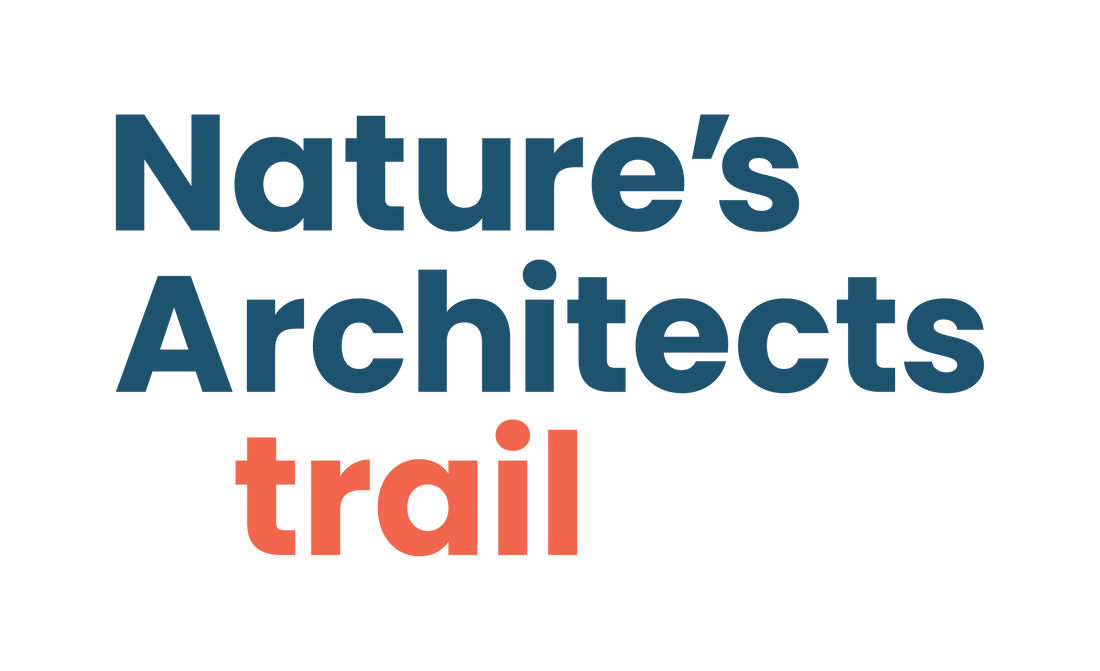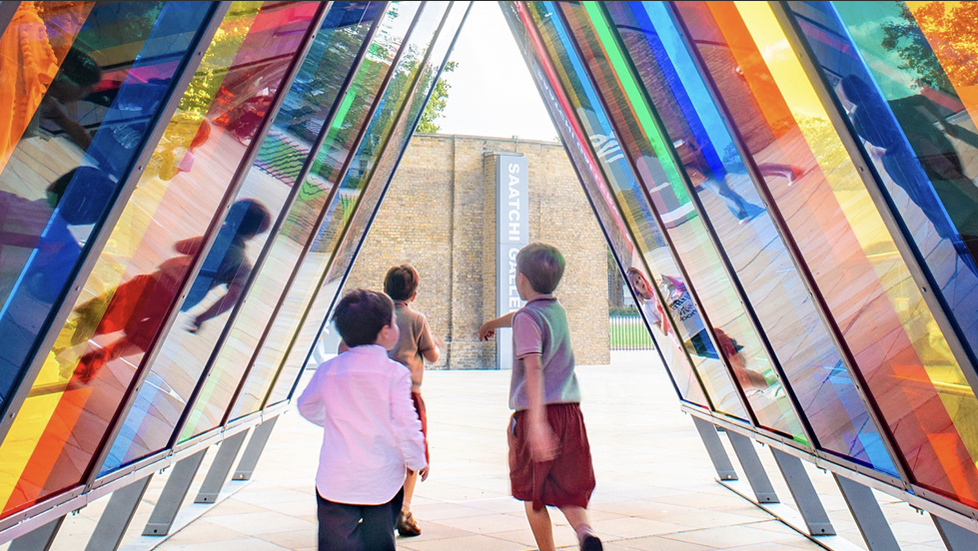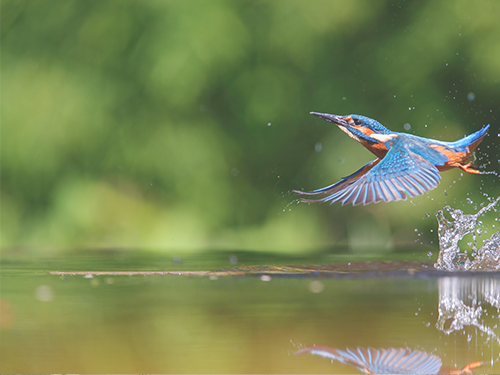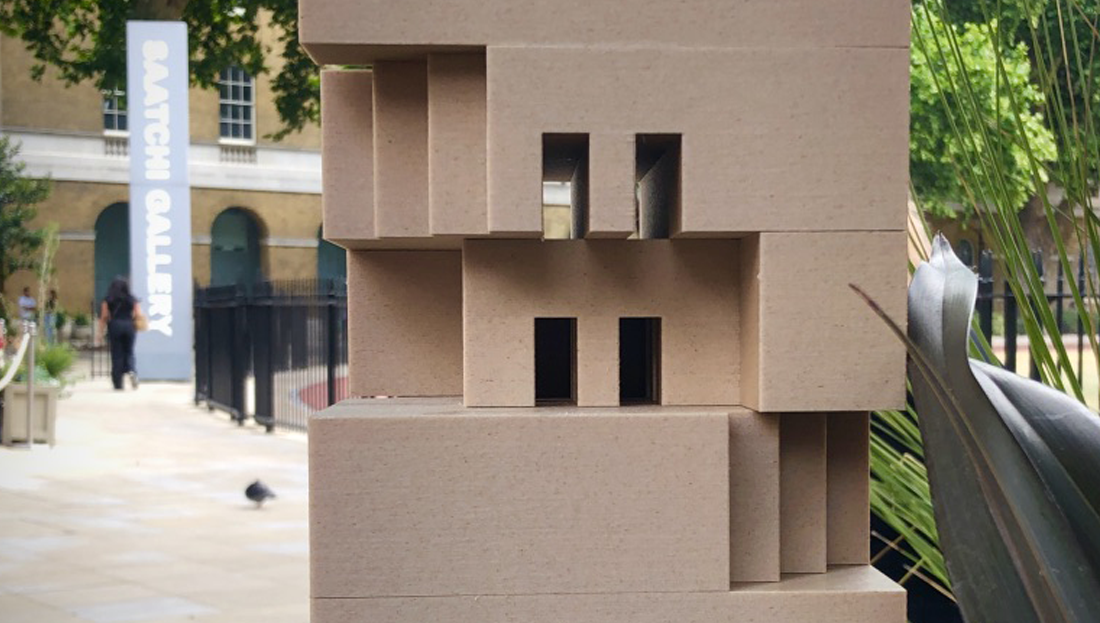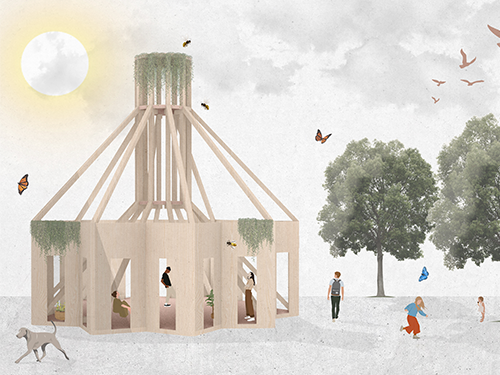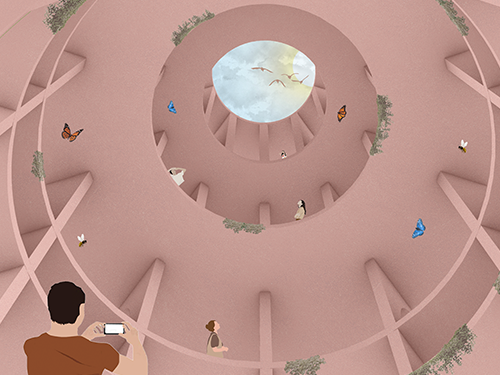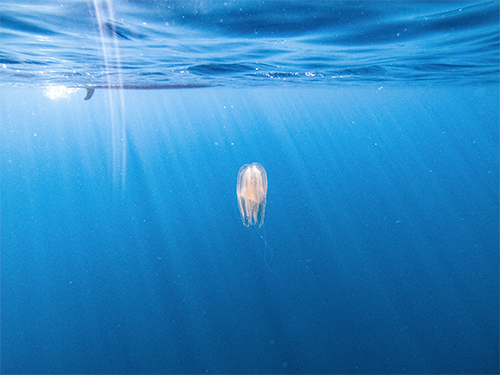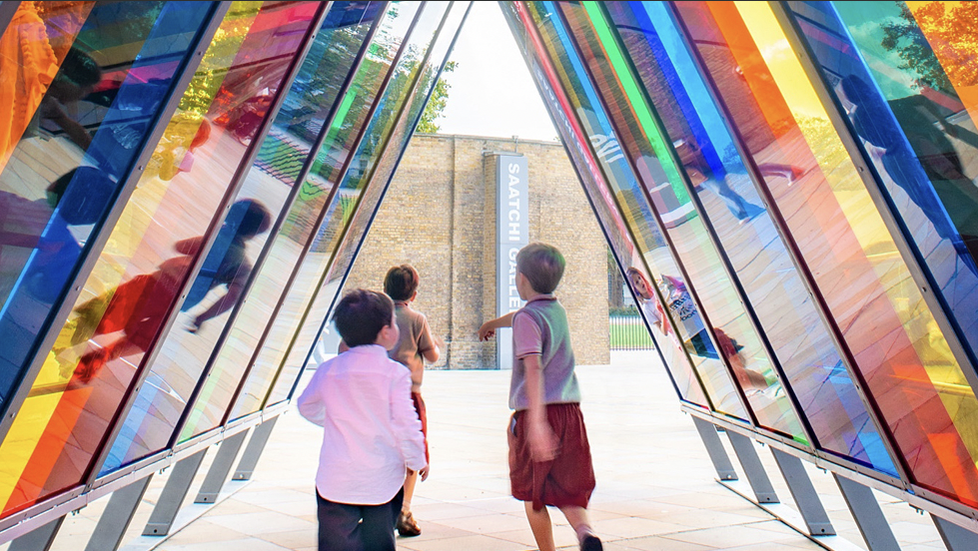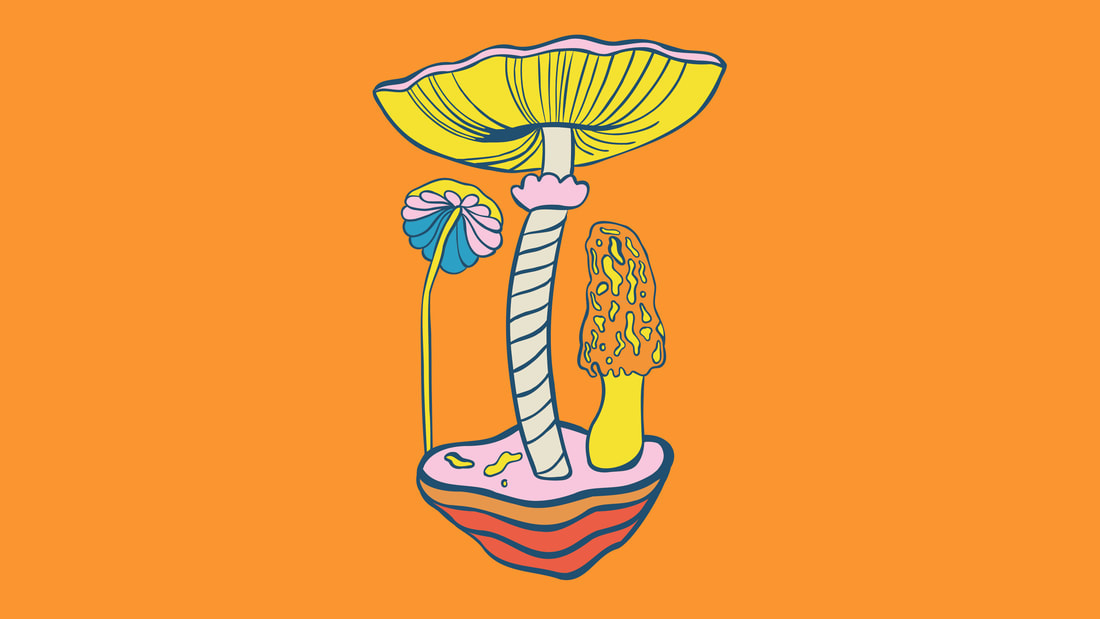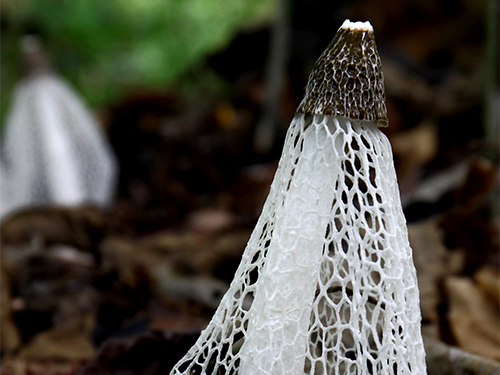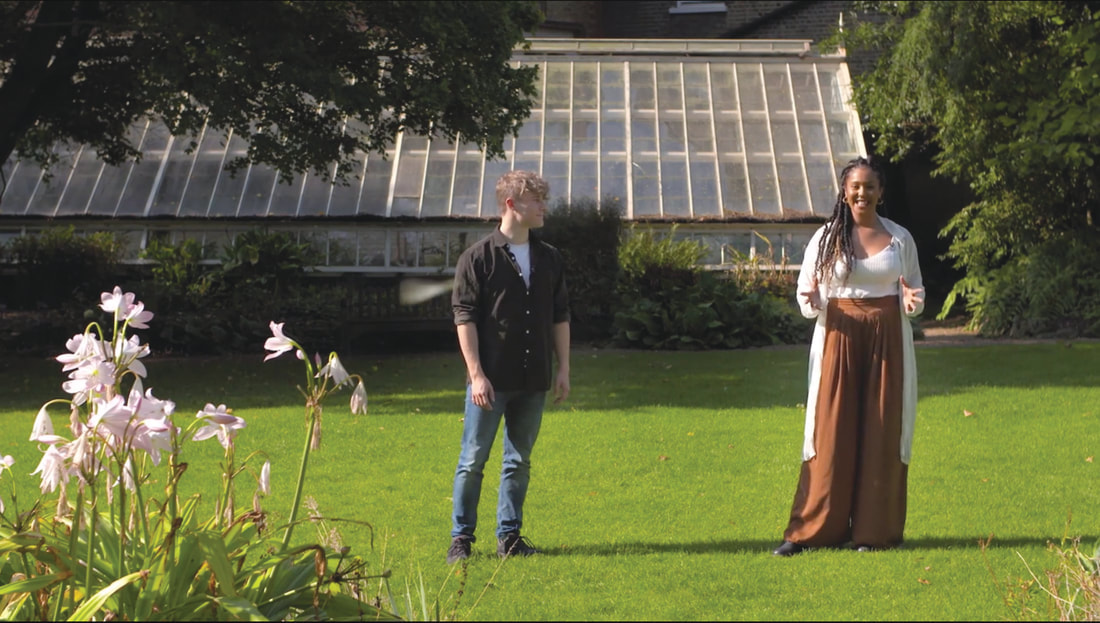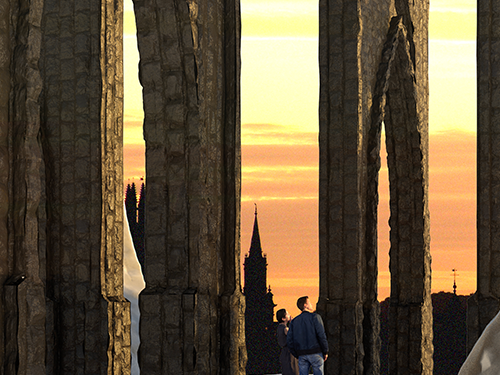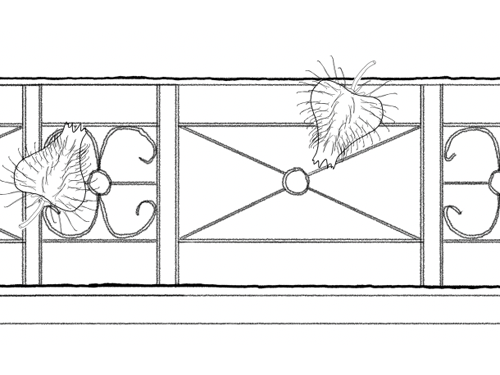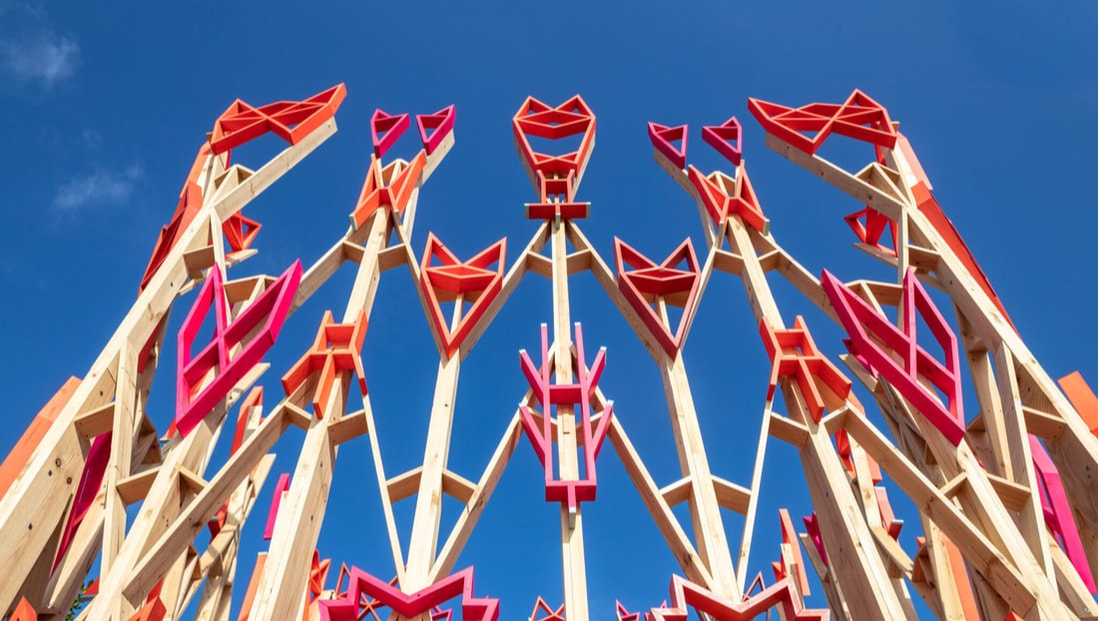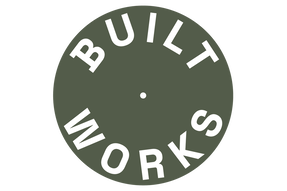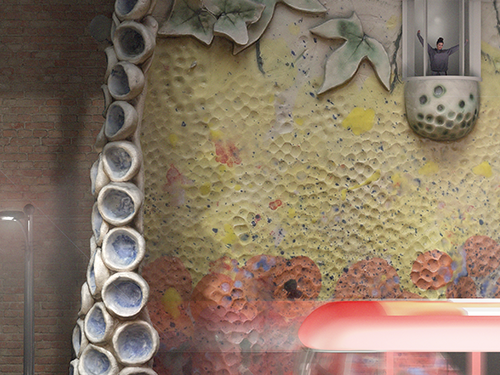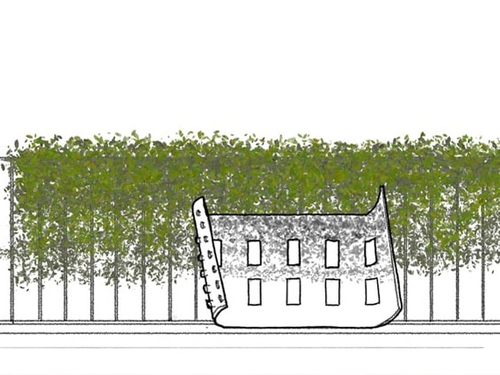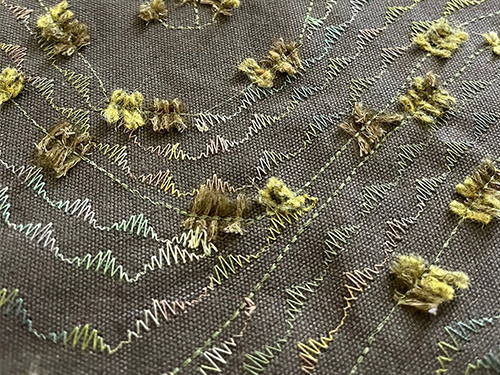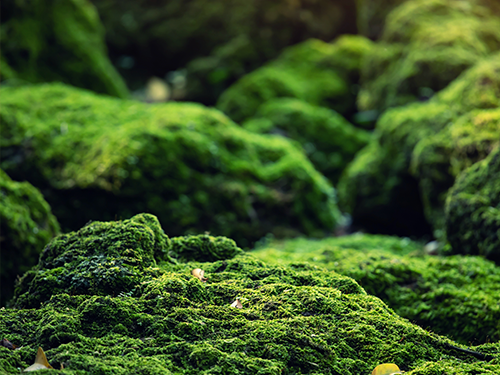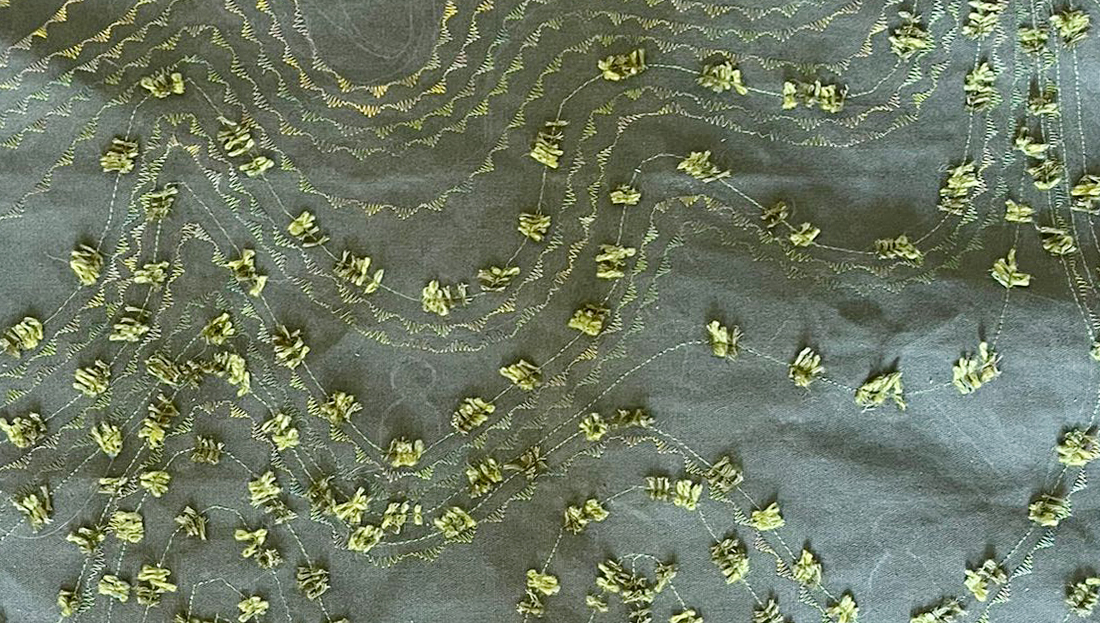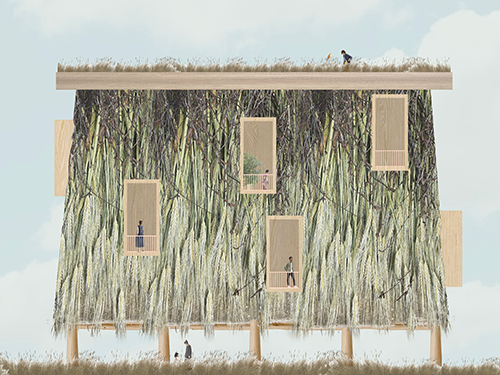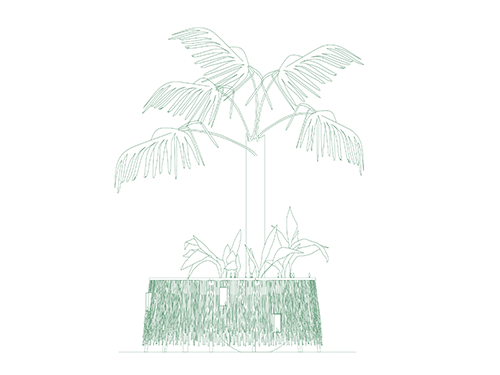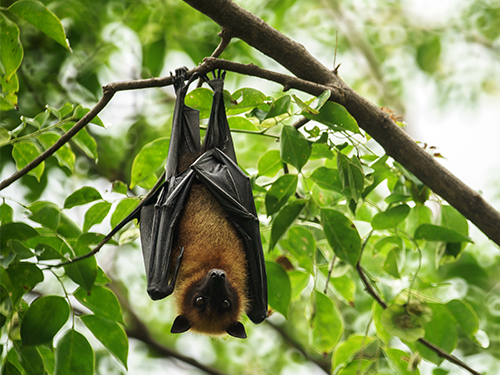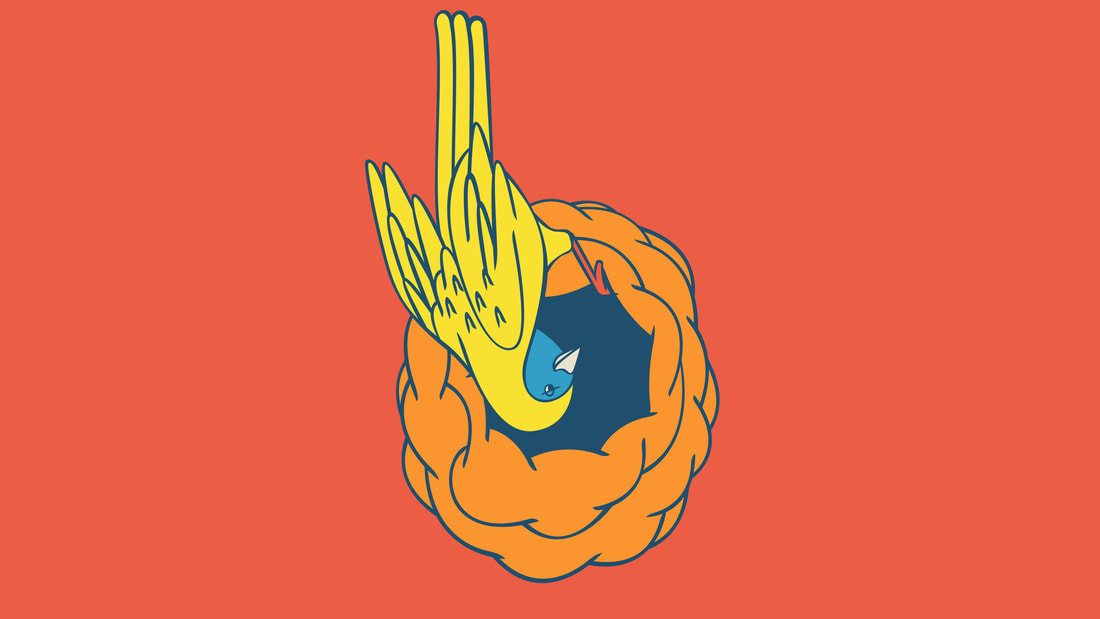Held in summer 2022, Nature’s Architects was a free, family-friendly trail to discover twenty micro-homes and structures, created by leading architects and inspired by nature and biomimicry.
Look around the doorsteps, tree forks, railings and planters close to Sloane Square. Learn about the different ways these creatures make their homes. Explore how their techniques can help us to be more sustainable and eco-friendly when building for humans.
The Nature's Architects trail was on display from June-September 2022. Created by Museum of Architecture and supported by Cadogan.
Look around the doorsteps, tree forks, railings and planters close to Sloane Square. Learn about the different ways these creatures make their homes. Explore how their techniques can help us to be more sustainable and eco-friendly when building for humans.
The Nature's Architects trail was on display from June-September 2022. Created by Museum of Architecture and supported by Cadogan.
|
Who Are Nature's Architects?
Nature’s Architects are the insects, animals, plants and other phenomena we find in the natural world. By studying them carefully we can see how they build their homes and create shapes and structures around themselves. They can inspire us when we design. |
Watch intro video
|
1
Bear
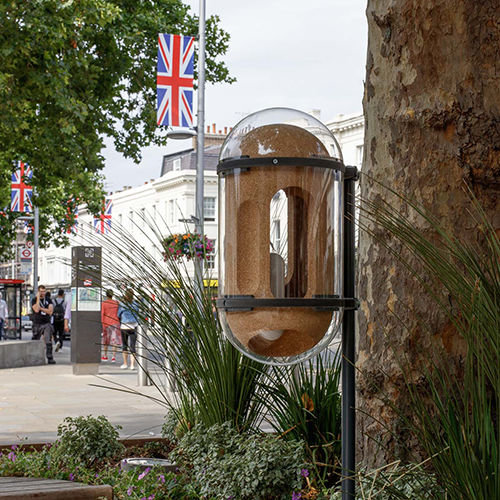 © Luke O'Donovan
© Luke O'Donovan
Design by Gruff Architects
‘Bear’ is a sleepy, cavernous, underworld home. It makes us think of prehistoric cave dwellers and our ancestral origins. Caves offer a ‘found space’ - the most basic means of shelter, where ancient humans lived and where bears still make their homes.
Natural caves are formed by weathering away the rock. Stalactites and stalagmites emerge from the ceiling and floor. This cavern is also made from carving away and adding form. It draws from places around the globe where man has excavated into rock to make dwellings, such as the Matmata homes of Tunisia, troglodyte villages in Iran or at Petra, Jordan.
'Bear’ is milled from solid cork block, with insertions of oak dowels and suspended within a clear acrylic capsule.
‘Bear’ is a sleepy, cavernous, underworld home. It makes us think of prehistoric cave dwellers and our ancestral origins. Caves offer a ‘found space’ - the most basic means of shelter, where ancient humans lived and where bears still make their homes.
Natural caves are formed by weathering away the rock. Stalactites and stalagmites emerge from the ceiling and floor. This cavern is also made from carving away and adding form. It draws from places around the globe where man has excavated into rock to make dwellings, such as the Matmata homes of Tunisia, troglodyte villages in Iran or at Petra, Jordan.
'Bear’ is milled from solid cork block, with insertions of oak dowels and suspended within a clear acrylic capsule.
|
Buy a creative kit
Packed with craft materials and a magazine to help you carve your own clay den like a bear. |
Nature's Architects Trail
There are 20 structures on this trail. Look closely: have you spotted them all yet? |
Gruff Architects
Find out how Gruff Architects made their structures and devised their concepts. |
2
Frog
 © Museum of Architecture
© Museum of Architecture
Design by Gruff Architects
‘Frog’ was designed for a dystopian future world. Imagine sea levels have risen and human homes have adapted to this aquatic future. Notice the semi-submerged platform. It is inspired by lily pads, a habitat of the humble frog, and of futuristic floating star-cities.
The miniature building's form draws upon the incredible physical properties of liquid surface tension. The line where the water meets the air is crucial. This surface is punctuated by the diving structures, floating garden and main dwelling rotunda.
The structure is assembled from 3D-resin-prints bound together and supported within a case resembling a water-filled, museum-ready bell-jar.
‘Frog’ was designed for a dystopian future world. Imagine sea levels have risen and human homes have adapted to this aquatic future. Notice the semi-submerged platform. It is inspired by lily pads, a habitat of the humble frog, and of futuristic floating star-cities.
The miniature building's form draws upon the incredible physical properties of liquid surface tension. The line where the water meets the air is crucial. This surface is punctuated by the diving structures, floating garden and main dwelling rotunda.
The structure is assembled from 3D-resin-prints bound together and supported within a case resembling a water-filled, museum-ready bell-jar.
|
About Nature's Architects
Watch a short video about biomimicry! |
Want to take me home?
Would you like to give this structure a permanent home? |
Gruff Architects
Find out how Gruff Architects made their structures |
3
Weaver Bird
 © Luke O'Donovan
© Luke O'Donovan
Design by Gruff Architects
‘Weaver Bird’ is a home suspended within the tree canopy. It forms a safe and secure, protective dwelling. High up, it is perfect for surveying the environment around it.
Inside, a triple-helix wraps and binds the outer edge of a series of stacked platforms. The design is reminiscent of the intricately woven nests of the weaver bird and the helical formations of DNA. How would it feel to live up here?
The model is the assembly of precision cut ply-wood layers, joined by thin wooden strips. These form an expanded spiral arranged in a triple-helix. It is hung within an inverted bell-jar enclosure, representative of the museum vitrines of its avian cousins.
‘Weaver Bird’ is a home suspended within the tree canopy. It forms a safe and secure, protective dwelling. High up, it is perfect for surveying the environment around it.
Inside, a triple-helix wraps and binds the outer edge of a series of stacked platforms. The design is reminiscent of the intricately woven nests of the weaver bird and the helical formations of DNA. How would it feel to live up here?
The model is the assembly of precision cut ply-wood layers, joined by thin wooden strips. These form an expanded spiral arranged in a triple-helix. It is hung within an inverted bell-jar enclosure, representative of the museum vitrines of its avian cousins.
|
Buy a creative kit
Packed with craft materials and a magazine to help you make your own building like a nest. |
Museum of Architecture
Want to hear about the latest events, news and activities from Museum of Architecture? |
Gruff Architects
Find out how Gruff Architects made their structures and devised their concepts. |
4
Humpback Whale
 © Luke O'Donovan
© Luke O'Donovan
Design by Gruff Architects
‘Humpback Whale’ is inspired by tales of the high seas - from riding the crest of a wave to adventuring into its murky depths. Look closely at this subterranean world. It reminds us of the mystery and majesty of the great animals of our oceans. Imagine living inside it - deep within the ‘belly of the beast’.
A set of angled slats filter light into the cavernous underworld. This mimics baleen inside the whale’s mouth, filtering food and nutrients from the ocean’s depths.
The model is constructed from an arrayed series of plywood planes which have each been individually computer numerically controlled to reveal the contours of the interior of the ‘whale mouth’. It is supported by clear acrylic supports which transfer light into the central void. It is wrapped in an acrylic capsule, not unlike a modern-day submersible boat.
|
#NaturesArchitectsTrail
Share your photos and tag us @MuseumofArchitecture @DukeofYorkSquare @PavilionRoad |
Cadogan supports bringing nature into our cities and is committed to making a positive contribution towards a sustainable environment.
|
Gruff Architects
Find out how Gruff Architects made their structures and devised their concepts, using biomimicry as inspiration. |
5
Coral Heights
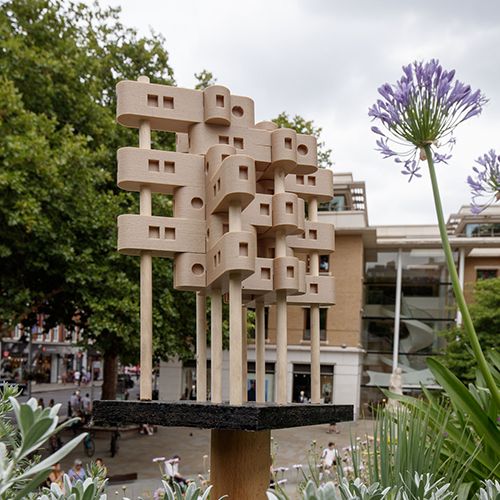 © Luke O'Donovan
© Luke O'Donovan
Design by NOOMA Studio
‘Coral Heights’ is a tower block, inspired by the oscillating movement of coral.
It draws from coral colonies, where many individual creatures live collectively - yes! coral polyps are animals not plants. Notice how the blocks of ‘Coral Heights’ are structurally dependent on one another.
This is a building that could continue to grow vertically. Its repetitive stacking and twisting motion, reminding us of reefs.
Rigidity in nature, and in building, causes tension and breakage. Like the segmented, jointed tentacles of coral, notice how this structure is flexible, allowing it to sway freely.
‘Coral Heights’ is a tower block, inspired by the oscillating movement of coral.
It draws from coral colonies, where many individual creatures live collectively - yes! coral polyps are animals not plants. Notice how the blocks of ‘Coral Heights’ are structurally dependent on one another.
This is a building that could continue to grow vertically. Its repetitive stacking and twisting motion, reminding us of reefs.
Rigidity in nature, and in building, causes tension and breakage. Like the segmented, jointed tentacles of coral, notice how this structure is flexible, allowing it to sway freely.
|
Buy a creative kit
Packed with craft materials and a magazine to help you design your own city like a coral reef! |
Nature's Architects Trail
There are 20 structures on this trail. Look closely: have you spotted them all yet? |
NOOMA Studio
Read about the architects who designed this and how they are inspired by nature. |
6
Kingfisher's Nest
 © Luke O'Donovan
© Luke O'Donovan
Design by NOOMA Studio
‘Kingfisher’s Nest’ is a tower of burrows. It mimics how kingfishers dig their homes deep into dirt banks, tree cavities or old termite mounds.
This tower gives its human inhabitants moments to experience the sky, light and wind, from the protective shelter of their burrow.
Nestled in the landscape, plants are encouraged to climb and grow over the tower. This allows the ground to emerge upwards and over the structure.
‘Kingfisher’s Nest’ is a tower of burrows. It mimics how kingfishers dig their homes deep into dirt banks, tree cavities or old termite mounds.
This tower gives its human inhabitants moments to experience the sky, light and wind, from the protective shelter of their burrow.
Nestled in the landscape, plants are encouraged to climb and grow over the tower. This allows the ground to emerge upwards and over the structure.
|
Want to take me home?
Would you like to give this structure a permanent home? |
Creativity Time
Colour is all around you, learn what impact it has! |
NOOMA Studio
Read how these architects are inspired by nature |
7
Owl Barbules
 © Luke O'Donovan
© Luke O'Donovan
Design by NOOMA Studio
'Owl Barbules' is a structure mimicking the anatomy of an owl’s feather. Off the central quill, barbs and smaller barbules branch off. These struts criss-cross each other to give the feathers extra strength. This helps the bird to move almost silently during the night.
Stripy zigzag patterns decorate owls' feathers and help them to camouflage when hunting.
‘Owl Barbules’ is a dense, repetitive, lightweight construction, filled with air. It shows how a simple module can be repeated to create complex structures.
Imagine being inside it and experiencing the spectacle of patterns and shapes overlaid on one another.
The overall form shows one iteration of the repetition of structures but many others could be conceived by forming a new central point.
'Owl Barbules' is a structure mimicking the anatomy of an owl’s feather. Off the central quill, barbs and smaller barbules branch off. These struts criss-cross each other to give the feathers extra strength. This helps the bird to move almost silently during the night.
Stripy zigzag patterns decorate owls' feathers and help them to camouflage when hunting.
‘Owl Barbules’ is a dense, repetitive, lightweight construction, filled with air. It shows how a simple module can be repeated to create complex structures.
Imagine being inside it and experiencing the spectacle of patterns and shapes overlaid on one another.
The overall form shows one iteration of the repetition of structures but many others could be conceived by forming a new central point.
|
Museum of Architecture
Find out more about Museum of Architecture's exhibitions and upcoming events |
Alphabet Series
Free activity for kids to learn about well known architectural buildings via the alphabet |
NOOMA Studio
Read about the architects who designed this and how they are inspired by nature. |
8
Jellyfish Bells
 © Luke O'Donovan
© Luke O'Donovan
Design by NOOMA Studio
As jellyfish bob through water, they ‘look up to the sky’, journeying to reach the light. Jellyfish shrink and expand to propel themselves through the water. This movement is mimicked in ‘Jellyfish Bells’ - a bulbous structure that stretches up and down.
Imagine walking through this tower. The floor plates contract and expand, like the relaxing muscle movement of a jellyfish bell. Arches bridge the floor plates in tentacle forms. Its central skylight casts light from above. You might stroll through the building like a jellyfish wandering the ocean.
|
#NaturesArchitectsTrail
Share your photos and tag us @MuseumofArchitecture @DukeofYorkSquare @PavilionRoad |
Cadogan supports bringing nature into our cities and is committed to making a positive contribution towards a sustainable environment.
|
NOOMA Studio
Find out how these architects made their structures and devised their concepts, using biomimicry as inspiration. |
9
Caddis Cathedral
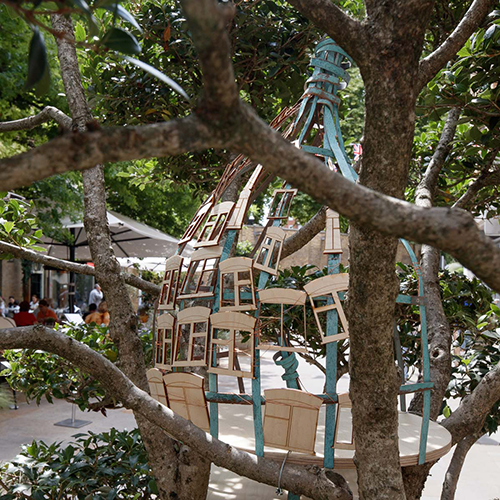 © Luke O'Donovan
© Luke O'Donovan
Design by Studio Aki
'Caddis Cathedral' takes its inspiration from the homes of the caddisfly larvae. These small insects use objects they find in their surroundings to build their dwellings. We can get clues about where a caddisfly comes from by looking closely at its selection of materials.
Caddisflies often use gravel, sand, twigs and bitten-off pieces of plants to make their homes. What is this ‘Caddis Cathedral’ made of? It gathers its material from the area surrounding the site and the wider city of London, making it very specific to this place. Its form borrows from the tall thin structure of the larvae.
'Caddis Cathedral' takes its inspiration from the homes of the caddisfly larvae. These small insects use objects they find in their surroundings to build their dwellings. We can get clues about where a caddisfly comes from by looking closely at its selection of materials.
Caddisflies often use gravel, sand, twigs and bitten-off pieces of plants to make their homes. What is this ‘Caddis Cathedral’ made of? It gathers its material from the area surrounding the site and the wider city of London, making it very specific to this place. Its form borrows from the tall thin structure of the larvae.
|
School for Creative Thinkers
Learn all about architecture through hands on activities, designed for kids! |
Nature's Architects Trail
There are 20 structures on this trail. Look closely: have you spotted them all yet? |
Studio Aki
Read about the architects who designed this and how they are inspired by nature. |
10
Termite City
 © Luke O'Donovan
© Luke O'Donovan
Design by Studio Aki
Termite mounds can be over 10 metres high and protect their underground nests. They are built by countless generations of insects who must cooperate to create a structure, without any direct communication.
Imagine what would happen if termites made our human cities or buildings - creating organic pathways that erode over time, without any masterplan. How might it feel to explore such a city? This structure helps us imagine.
Termites are always building or working, so their underground homes can easily overheat from all of the carbon dioxide produced. It is for this reason that they build their mounds, as they provide fresh air to cool down their nests.
Termite mounds can be over 10 metres high and protect their underground nests. They are built by countless generations of insects who must cooperate to create a structure, without any direct communication.
Imagine what would happen if termites made our human cities or buildings - creating organic pathways that erode over time, without any masterplan. How might it feel to explore such a city? This structure helps us imagine.
Termites are always building or working, so their underground homes can easily overheat from all of the carbon dioxide produced. It is for this reason that they build their mounds, as they provide fresh air to cool down their nests.
|
Buy a creative kit
Packed with craft materials and a magazine to help you build like a mushroom! |
Museum of Architecture
Want to hear about the latest events, news and activities from Museum of Architecture? |
Studio Aki
Read about the architects who designed this and how they are inspired by nature. |
11
Veil House
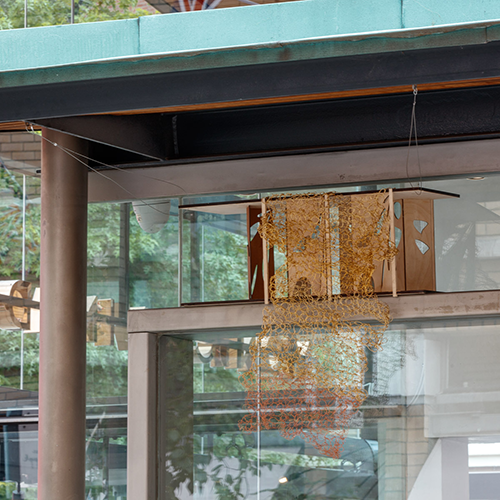 © Luke O'Donovan
© Luke O'Donovan
Design by Studio Aki
Inspired by veiled lady mushrooms, the ‘Veil House’ is a mysterious house surrounded by a lacey veil.
Playing with the idea of layers of public and private, you can only glimpse what might be happening inside... At night, however, changing light levels make the veils transparent.
The holes are in the shape of a pattern called a Voronoi tessellation. It is made up of different irregular shapes fitting together. This pattern is common in nature and architecture.
|
Cadogan supports bringing nature into our cities and is committed to making a positive contribution towards a sustainable environment.
|
The City of your Imagination
Free activity for kids: design your own city! Just one of the many creative projects devised by the School for Creative Thinkers. |
Studio Aki
Find out how these architects made their structures and devised their concepts, using biomimicry as inspiration. |
12
Exoshelters
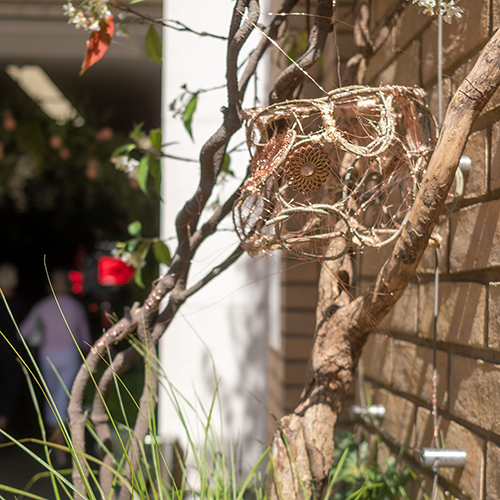 © Studio Aki
© Studio Aki
Design by Studio Aki
These delicate, yet strong structures are inspired by the skeletons of spiders. Exoskeletons, which surround a spider's soft tissue, provide shelter in a similar way to how we want our homes to protect us.
Hanging like droplets from a silken mesh, 'Exoshelters' reminds us of one of the most amazing natural materials: spider silk is five times stronger than steel and 1000 times thinner than human hair.
There are over 45,000 species of named spiders. While not all spiders create webs, those that do often create a wide range of designs and shapes that can be used to identify different species.
These delicate, yet strong structures are inspired by the skeletons of spiders. Exoskeletons, which surround a spider's soft tissue, provide shelter in a similar way to how we want our homes to protect us.
Hanging like droplets from a silken mesh, 'Exoshelters' reminds us of one of the most amazing natural materials: spider silk is five times stronger than steel and 1000 times thinner than human hair.
There are over 45,000 species of named spiders. While not all spiders create webs, those that do often create a wide range of designs and shapes that can be used to identify different species.
|
Buy a creative kit
Packed with craft materials and a magazine to help you build with hexagons, just like a hive! |
Want to take me home?
I could be yours! Get in touch if you would like to give this structure a permanent home. |
Studio Aki
Read about the architects who designed this and how they are inspired by nature. |
13
Razor Clam
 © Luke O'Donovan
© Luke O'Donovan
Design by Built. Works and Common Objects
Razor clams use the ground as a sanctuary, to shield themselves from the elements. They can burrow into the sand at the speed of one inch per second in order to escape predators or the incoming waves.
In this structure, clam shells provide a subterranean sanctuary, as well as an above ground lookout. Architecture should provide a safe shelter and sanctuary, but it should also be outward looking and open. Insular and defensive structures close down cities and reduce public space. There is a balance to be found between a shelter and a castle.
Razor clams use the ground as a sanctuary, to shield themselves from the elements. They can burrow into the sand at the speed of one inch per second in order to escape predators or the incoming waves.
In this structure, clam shells provide a subterranean sanctuary, as well as an above ground lookout. Architecture should provide a safe shelter and sanctuary, but it should also be outward looking and open. Insular and defensive structures close down cities and reduce public space. There is a balance to be found between a shelter and a castle.
|
About Nature's Architects
Watch a short video about biomimicry! |
Nature's Architects Trail
There are 20 structures on this trail. How many have you visited? |
Built Works
Read how these architects are inspired by nature |
14
Burdock Burr
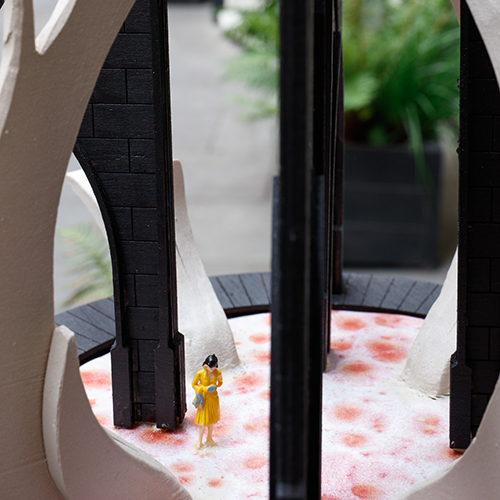 © Luke O'Donovan
© Luke O'Donovan
Design by Built. Works and Common Objects
Burrs seem to travel aimlessly, scattered by the blowing wind, flowing water or moving animals. But when they come to rest on fertile ground, they have the potential to grow into some of the largest structures seen in nature.
‘Burdock Burr’ is a construction that considers the burdock seed up close and the monumental scale of the structures that will spring from it.
A burdock burr encloses its seeds in a natural vault. Buttresses, like those supporting the walls of a Gothic cathedral, hold the seeds in place. These keep the seeds safe until the crucial moment of release.
Burrs seem to travel aimlessly, scattered by the blowing wind, flowing water or moving animals. But when they come to rest on fertile ground, they have the potential to grow into some of the largest structures seen in nature.
‘Burdock Burr’ is a construction that considers the burdock seed up close and the monumental scale of the structures that will spring from it.
A burdock burr encloses its seeds in a natural vault. Buttresses, like those supporting the walls of a Gothic cathedral, hold the seeds in place. These keep the seeds safe until the crucial moment of release.
|
Creativity Time
Free Activity for kids: Learn how to draw anything around you with these drawing tools! |
Museum of Architecture
Want to hear about the latest events, news and activities from Museum of Architecture? |
Built Works
Read about the architects who designed this and how they are inspired by nature. |
15
Cactus
 © Luke O'Donovan
© Luke O'Donovan
Design by Built. Works and Common Objects
Like cacti on a desert cliff, villages and towns can seemingly grow out of the most unlikely places. Here a settlement has started to grow from the railings, out of nothing. The cactus clings to the stone face of the wall.
As in nature there are challenges that must be overcome to settle in such places. Where will the inhabitants find water? What do they eat? Do they need to communicate and trade with other settlements nearby? How will they survive?
Like cacti on a desert cliff, villages and towns can seemingly grow out of the most unlikely places. Here a settlement has started to grow from the railings, out of nothing. The cactus clings to the stone face of the wall.
As in nature there are challenges that must be overcome to settle in such places. Where will the inhabitants find water? What do they eat? Do they need to communicate and trade with other settlements nearby? How will they survive?
|
Buy a creative kit
Packed with craft materials and a magazine to help you make a building inspired by a cactus! |
Want to take me home?
I could be yours! Get in touch if you would like to give this structure a permanent home. |
Built Works
Read about the architects who designed this and how they are inspired by nature. |
16
Octopus
 © Museum of Architecture
© Museum of Architecture
Design by Built. Works and Common Objects
An octopus can conceal itself by altering the texture and colour of its skin to match its context. In architecture, there is also sometimes a need to blend into the surrounding context, whether that is a man made or natural environment.
This structure sits on the railings outside the Holy Trinity School. Can or should architecture truly blend into its context? Or should a building have a unique character that contributes more actively to the surroundings?
Like an octopus, can a building choose to hide when it needs to - for example with facades that can change colour or shape? Perhaps small hints will always reveal its unique presence in a scene.
An octopus can conceal itself by altering the texture and colour of its skin to match its context. In architecture, there is also sometimes a need to blend into the surrounding context, whether that is a man made or natural environment.
This structure sits on the railings outside the Holy Trinity School. Can or should architecture truly blend into its context? Or should a building have a unique character that contributes more actively to the surroundings?
Like an octopus, can a building choose to hide when it needs to - for example with facades that can change colour or shape? Perhaps small hints will always reveal its unique presence in a scene.
|
Three Dimensional Shapes
Free activity for kids: Learn how to turn any flat object into a 3D shape! |
#NaturesArchitectsTrail
Share your photos and tag us @MuseumofArchitecture @DukeofYorkSquare @PavilionRoad |
Built Works
Read about the architects who designed this and how they are inspired by nature. |
17
Baya Weaver Den
 © Luke O'Donovan
© Luke O'Donovan
Design by Madeleine Kessler, Ness Lafoy, Rosie Hervey & Tess Wakeling
- Hark! how the tune swells, that erewhile did wane!
Look up, love! -Ah! cling close, and never move!
How can I have enough of life and love?
William Morris
The baya weaver is a sparrow-sized bird found across South and Southeast Asia. These birds weave elaborate hanging nests from long strips of paddy leaves, rough grasses and long strips torn from palm fronds. They use their beaks to strip and collect long strands, which they then weave and knot to build a shaped nest, with a central nesting chamber.
'Baya weaver den' explores weaving as a way to create a shelter for both animals and humans. Take a seat and look up from below.
- Hark! how the tune swells, that erewhile did wane!
Look up, love! -Ah! cling close, and never move!
How can I have enough of life and love?
William Morris
The baya weaver is a sparrow-sized bird found across South and Southeast Asia. These birds weave elaborate hanging nests from long strips of paddy leaves, rough grasses and long strips torn from palm fronds. They use their beaks to strip and collect long strands, which they then weave and knot to build a shaped nest, with a central nesting chamber.
'Baya weaver den' explores weaving as a way to create a shelter for both animals and humans. Take a seat and look up from below.
|
School for Creative Thinkers
Learn all about architecture through hands on activities, designed for kids! |
Nature's Architects Trail
There are 20 structures on this trail. Look closely: have you spotted them all yet? |
Read about the collaboration of architects and designers who created this and how they are inspired by nature.
|
18
Mossy Mound
 © Luke O'Donovan
© Luke O'Donovan
Design by Madeleine Kessler, Ness Lafoy and Rosie Hervey
And when thou art weary I'll find thee a bed,
Of mosses and flowers to pillow thy head.
John Keats
Mosses have stems and leaves, but don’t have true roots. This means they can appear in places that are otherwise uninhabitable, such as rocky ledges on mountainsides. ‘Mossy Mound' takes inspiration from this.
Look closely at this mossy world at human scale. Sit back and enjoy a moment of cushioned rest.
Mosses are among the first plant colonisers of disturbed sites, such as when an area is deforested or affected by forest fires. They stabilise the soil surface and retain water, helping new plants to grow and are essential to a healthy forest floor ecosystem.
And when thou art weary I'll find thee a bed,
Of mosses and flowers to pillow thy head.
John Keats
Mosses have stems and leaves, but don’t have true roots. This means they can appear in places that are otherwise uninhabitable, such as rocky ledges on mountainsides. ‘Mossy Mound' takes inspiration from this.
Look closely at this mossy world at human scale. Sit back and enjoy a moment of cushioned rest.
Mosses are among the first plant colonisers of disturbed sites, such as when an area is deforested or affected by forest fires. They stabilise the soil surface and retain water, helping new plants to grow and are essential to a healthy forest floor ecosystem.
|
Buy a creative kit
Packed with craft materials and a magazine to help you make your own tree house! |
Want to take me home?
I could be yours! Get in touch if you would like to give this structure a permanent home. |
Read about the collaboration of architects and designers who created this and how they are inspired by nature.
|
19
Hedgehog House
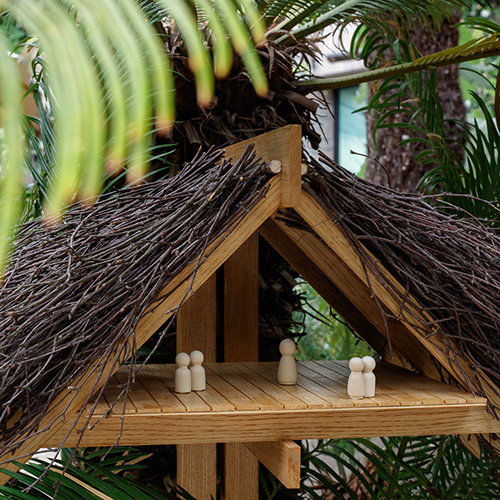 © Luke O'Donovan
© Luke O'Donovan
Design by Madeleine Kessler, Ness Lafoy and Rosie Hervey
What Twigs We held by--
Oh the View
When Life’s swift River striven through
We pause before a further plunge
To take Momentum--
As the Fringe
Emily Dickinson
Hedgehogs make nests from mosses, grass, twigs, leaves and other garden debris. This miniature home explores how humans can use foraged materials to create shelters.
An oversized timber-frame is clad with foraged materials. Beneath a platform nestles in a tree canopy. Imagine if you lived amongst these trees and plants.
What Twigs We held by--
Oh the View
When Life’s swift River striven through
We pause before a further plunge
To take Momentum--
As the Fringe
Emily Dickinson
Hedgehogs make nests from mosses, grass, twigs, leaves and other garden debris. This miniature home explores how humans can use foraged materials to create shelters.
An oversized timber-frame is clad with foraged materials. Beneath a platform nestles in a tree canopy. Imagine if you lived amongst these trees and plants.
20
Bat Boardwalk
 © Luke O'Donovan
© Luke O'Donovan
Design by Madeleine Kessler, Ness Lafoy and Rosie Hervey
The bat hanging upside down laughs at the topsy-turvy world.
Japanese proverb
Bats spend a lot of their time hanging upside down, often sheltering in the undercrofts of buildings. They create homes from spaces that are otherwise unused.
'Bat Boardwalk' creates a new cyclical promenade around the rim of the plant pot. Take a seat. Crouch down. Discover hidden habitats underneath.
This structure was made from natural, foraged materials, gathered from a recently felled birch tree on common land.
The bat hanging upside down laughs at the topsy-turvy world.
Japanese proverb
Bats spend a lot of their time hanging upside down, often sheltering in the undercrofts of buildings. They create homes from spaces that are otherwise unused.
'Bat Boardwalk' creates a new cyclical promenade around the rim of the plant pot. Take a seat. Crouch down. Discover hidden habitats underneath.
This structure was made from natural, foraged materials, gathered from a recently felled birch tree on common land.
|
Buy a creative kit
Packed with craft materials and a magazine to help you make your own building like a nest. |
#NaturesArchitectsTrail
Share your photos and tag us @MuseumofArchitecture @DukeofYorkSquare @PavilionRoad |
Read about the collaboration of architects and designers who created this and how they are inspired by nature.
|
School for Creative Thinkers™ © 2022































